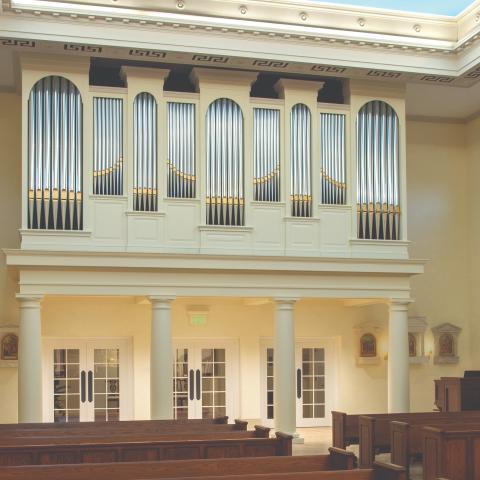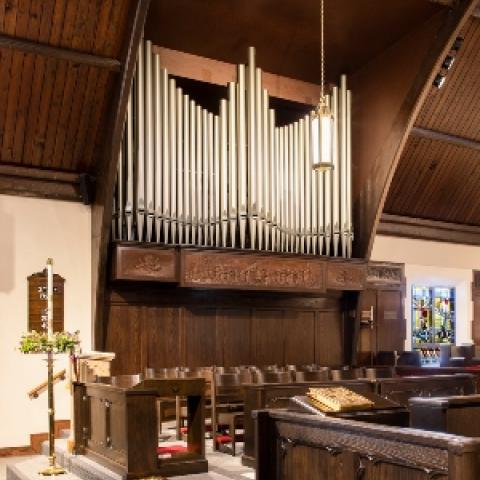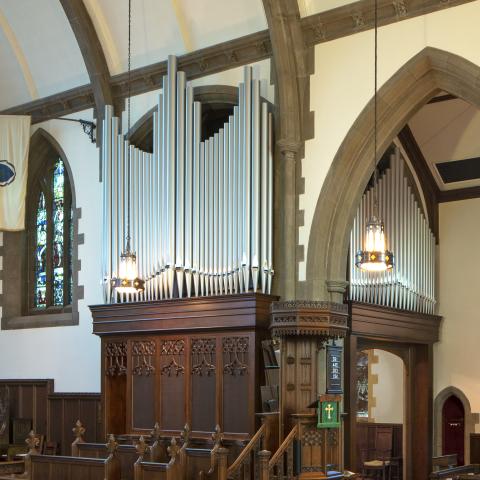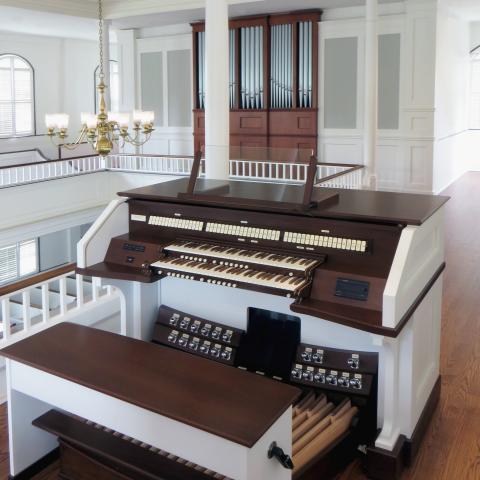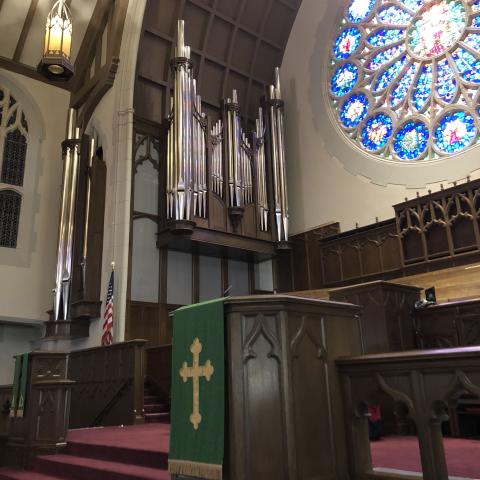Schoenstein & Co. Pipe Organ Builders, Benicia, California, has installed its Opus 179 organ in the chapel at Bishop Gadsden Episcopal Retirement Community, Charleston, South Carolina. The new organ comprises 14 voices, 16 ranks, and 995 pipes on three manuals and pedal.
The expressive Great division on the left houses the expected principal chorus of 8′, 4′, and 2′ Mixture III in addition to a softer 8′/4′ Corno Dolce/8′ Flute Celeste pairing, 8′ Harmonic Flute (Corno Dolce bass to tenor G), and Clarinet.
The Swell division, on the right side of the organ, has most of the instrument’s unification. The Bourdon serves as the Pedal Bourdon at 16′ (available in the Swell also) and continues as a Chimney Flute at 4′ C. The 8′/4′/2′ Salicional is the division’s unit echo diapason with a slight string edge as ample counterparts to both the Great chorus and Swell Gamba. The Oboe Horn serves as another color reed, a counterpart to the Great Clarinet, and also represents the softer 16′ reed available in the Pedal adding support without too much power. Inner shades regulate the 8′ Gamba, its Celeste (full compass), and the 16′/8′ Tuba Minor.
Rounding out the instrument is an independent Pedal Violoncello and Contrabass unit sitting in front of the Great shades. Metal down to 16′ C, it provides independent foundational support for the entire instrument.
The new organ is featured on the cover of the September 2022 issue of The Diapason:
https://www.thediapason.com/content/cover-feature-schoenstein-cobishop-gadsden-retirement-community
For information: schoenstein.com


